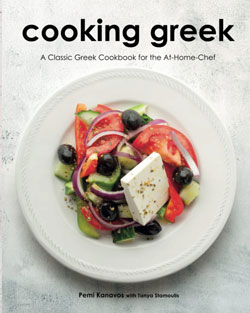knicks_fan87
Active member
Sometimes when I eat Greek food I taste some unexpected spices, like cumin or even hot pepper (like a hot paprika - the Hungarian stuff).
Is this common in traditional Greek cooking?
I was on Crete eating some sort of a turnover with greens, and it had cumin and and that hot paprika stuff in it. Blew my mind - the flavors were so different. And, I was in a "traditional" taverna, not a random restaurants with modern ties.
I asked the chef at the time, and he said that on Crete, since there were so many influences, it's affected the cuisine.
Is this common throughout Greece or is it isolated to Crete?
Is this common in traditional Greek cooking?
I was on Crete eating some sort of a turnover with greens, and it had cumin and and that hot paprika stuff in it. Blew my mind - the flavors were so different. And, I was in a "traditional" taverna, not a random restaurants with modern ties.
I asked the chef at the time, and he said that on Crete, since there were so many influences, it's affected the cuisine.
Is this common throughout Greece or is it isolated to Crete?


